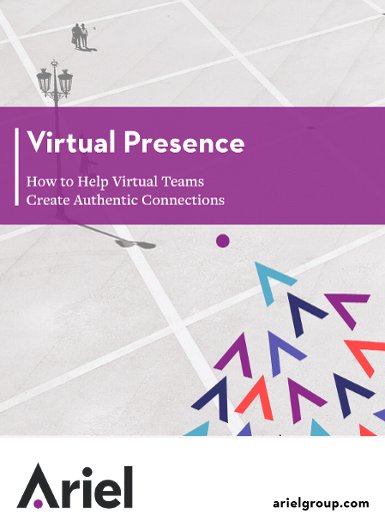Feed Your Bottom Line with Empathy

“If we are to keep our businesses relevant and our consumers happy, we must embrace empathy and let it be the force that drives us forward.”
Jason M. Boyers – Forbes 2013
CHEW ON THIS:
$26,041.
That’s the annual cost, per worker, of lost productivity resulting from communications barriers. Can your organization afford a lack of empathy?
After missing breakfast, a delayed train, and stressful commute, I was confronted with two lunch choices: a sugary coffee drink that would get me jittery or a fully-loaded sausage pizza. Neither one was a nutritious choice. And neither would satisfy my hunger long enough to prevent snacking. I decided the best “choice” in my lack-of-choices was the sausage pizza.
Two hours later, all I longed for was a nap – and a handful of antacids. The nutritionally bankrupt food left me lacking vital energy.
In today’s L&D environment, many of us can be faced with the same “lack of options” I experienced that day. In a perfect world, there’s always a beautiful, nutritious spread to satisfy our employees and develop them further. Instead, because of budgets, lack of buy-in, time, and resources – take your pick – we’re left with less than mouthwatering choices. Are we doing the best we can with the options in front of us? Absolutely – and yet we still feel guilty.
In 2015, Isabel Williams noted that leadership development consisted of some very important trends and directions – diverse generational leadership, leadership globalization, vertical development, and collective leadership – requiring higher degrees of collaboration, flexibility, adaptability, understanding, and sensitivity. And yet among leaders, the key, nutritious ingredient needed to meet those demands still seems to be missing. As Ernest J. Wilson III, Dean of Communications and Journalism at the University of Southern California, writes:
“…empathy is most lacking among middle managers and senior executives:
the very people who need it most because their actions affect such large numbers of people.”
One thing is certain: empathy is needed to help businesses run. Imagine saving your organization $26,041. That’s the cumulative annual cost per worker due to productivity losses resulting from communication barriers. Leaders who listen and speak with empathy – audience focus and awareness – communicate messages, feedback, guidance and direction more successfully. And that’s worth every penny.
So if you want to feed the need for empathy within your organization, what can you do, now?
FIRST COURSE: LISTEN WITH MORE THAN YOUR EARS
“Unfortunately, I have seen many situations in which people talk at each other, instead of making a concerted effort to listen and discover opportunities for collaboration.” Forbes Leadership – May 2013
Build stronger, healthier empathy skills by teaching leaders how to really listen: uninterrupted and reflective listening focused on hearing values and strengths, or – most importantly – emotional context and resonance. Leaders who can listen with heart generate higher levels of trust and respect, create more effective interpersonal communication and safer environments, and even reduce tension.
CLEANSE THE PALATE: DON’T GET BENT OUT OF SHAPE
Increase flexibility among your leadership by providing learning that includes collaborative problem solving, ensemble building, and thinking on your feet. One dish with all those ingredients? Theatrical improvisation training. Improvisational warm-ups, exercises, and role-playing improve flexibility, adaptability, openness, ability to recognize and accept offers and – wait for it – listening. That’s a recipe that can satisfy any deficiency.
MAIN COURSE: CONNECT ON MORE THAN THE WEATHER
Successful teams need solid relationships to collaborate, cooperate and problem-solve; however, building truly substantive relationships demands attentiveness, sensitivity, vulnerability and caring. Oh no…throw-your-arms-around-each-other and sing Kumbaya? Not at all. At The Ariel Group, we teach the importance of life mapping and journal reflection. Crafting and sharing personal credos will aid in building these relationships. What do we think is the very best option? Storytelling. Teach your leaders to craft and share stories about meaningful life moments and watch the bonds blossom and grow.
But what’s the return on investment for you and your organization? Here’s how empathy can make a profound impact:
A SIDE OF UNDERSTANDING: ORGANIZATIONAL CO-EVOLUTION
The term, which means “the adaptation of an organism triggered by a change in another,” may have originated in biology, but it applies to today’s demanding business landscape as well. Leaders with higher empathy skills have greater ability to recognize and relate to (changing) business environments, build on strengths around them, and adapt more fluidly, increasing bottom line and successfully growing a business.
ENJOY THE COMPANY: COMMITMENT VS COMPLIANCE
Leaders who deepen relationships among those around them bring greater harmony, cooperation, understanding, and enjoyment to the office. More than that, those relationships then elevate mere compliance to dedicated commitment, boosting productivity and expanding the bottom line. Nancy Etcoff, Harvard Medical School & Massachusetts General Hospital Psychologist, writes
“…workplaces that provide positive environments that foster interpersonal trust and quality personal relationships create the most committed and productive employees.”
A SWEET FINISH: ALL CLEAR AHEAD
Don’t miss out on offering your leaders what’s really lacking in their diet. Provide empathy training in your next learning engagement and you’ll be feeding more than just your leaders’ skill sets – in the long run you’ll be feeding your bottom line.
